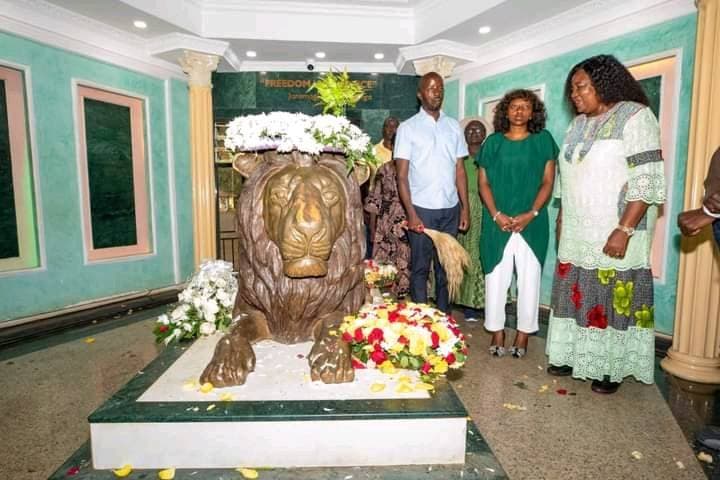We're loading the full news article for you. This includes the article content, images, author information, and related articles.
President Ruto's daughter's visit to the late Prime Minister's family home in Bondo signals a symbolic bridge-building moment, underscoring a potential new chapter in Kenya's political narrative.

In a move laden with political symbolism, First Daughter Charlene Ruto on Tuesday, October 28, 2025, visited the home and final resting place of former Prime Minister Raila Odinga in Bondo, Siaya County. The visit to the historic Kang’o Ka Jaramogi homestead, which occurred just over a week after Mr. Odinga was laid to rest, has been interpreted by observers as a significant gesture of national unity and reconciliation between two of Kenya's most prominent political dynasties.
Ms. Ruto was received by Raila Odinga Junior before she paid her respects at the graves of the late Prime Minister and his son, Fidel Odinga. She laid a wreath on Mr. Odinga's grave, an act witnessed by the family. Following the visit to the gravesite, Ms. Ruto proceeded to the family's Opoda Farm residence, where she spent time condoling with Mr. Odinga's widow, Mama Ida Odinga. Photographs released by the Orange Democratic Movement (ODM) party showed Ms. Ruto signing the condolence book and sharing a moment with Mama Ida, reflecting a personal touch that transcends the political rivalry that has often defined the relationship between the Ruto and Odinga families.
The choice of location for this gesture is profoundly significant. Kang’o Ka Jaramogi is not merely a family home but a political shrine and a site of immense historical and cultural importance. It is the final resting place of Kenya’s first Vice President, Jaramogi Oginga Odinga, and several other family members. The name itself is reported to mean “a place of unification.” The homestead houses the Jaramogi Oginga Odinga Mausoleum, a protected museum that chronicles the family's central role in Kenya's struggle for democracy. By visiting this hallowed ground, Ms. Ruto engaged with the deep legacy of the Odinga family, an act that goes beyond a simple condolence call.
The visit comes in the wake of Mr. Odinga's death on Wednesday, October 15, 2025, and his state burial on Sunday, October 19, 2025, which was attended by President William Ruto. At the funeral, President Ruto described his former rival as a “towering statesman” and a patriot. Ms. Ruto's visit continues this tone of reconciliation. It follows a steady stream of leaders from across the political spectrum, including former President Uhuru Kenyatta, who have made the pilgrimage to Bondo to pay their respects.
The historical context of the Ruto-Odinga political relationship has been one of intense competition, though it has also seen periods of collaboration. Most recently, before his passing, Mr. Odinga had entered into a working agreement with President Ruto's administration, a move credited with easing political tensions following youth-led anti-government protests. The ODM party has since affirmed its commitment to continue this partnership. Ms. Ruto's visit, therefore, is seen as reinforcing this spirit of cooperation at a critical juncture for the nation, as the opposition, and specifically the Luo Nyanza region, navigates a future without its long-standing political titan.
In a social media post following the visit, Raila Odinga Junior welcomed the gesture, stating, “Thank you so much for coming to K’ango Ka Jaramogi everyone is welcome.” The public reception was largely positive, with many Kenyans lauding Ms. Ruto for her action, which they viewed as a mature and unifying step. While Ms. Ruto holds no official government position, she has cultivated a public profile as a youth advocate, and her actions are often seen as reflecting the tone of her father's administration. This visit, in particular, speaks to a message of moving beyond the divisions of the past and fostering a more cohesive national identity.
Keep the conversation in one place—threads here stay linked to the story and in the forums.
Other hot threads
E-sports and Gaming Community in Kenya
Active 7 months ago
Popular Recreational Activities Across Counties
Active 7 months ago
The Role of Technology in Modern Agriculture (AgriTech)
Active 7 months ago
Investing in Youth Sports Development Programs
Active 7 months ago